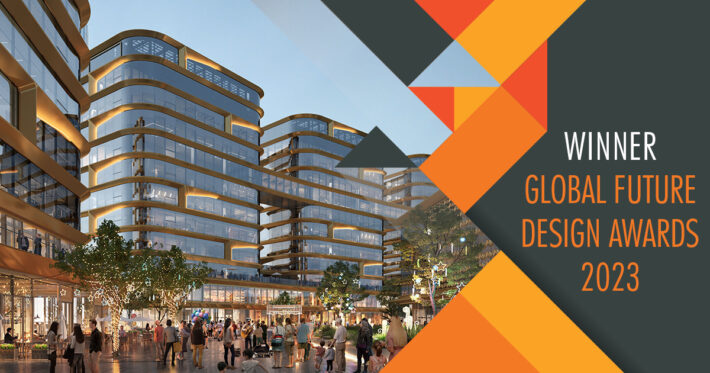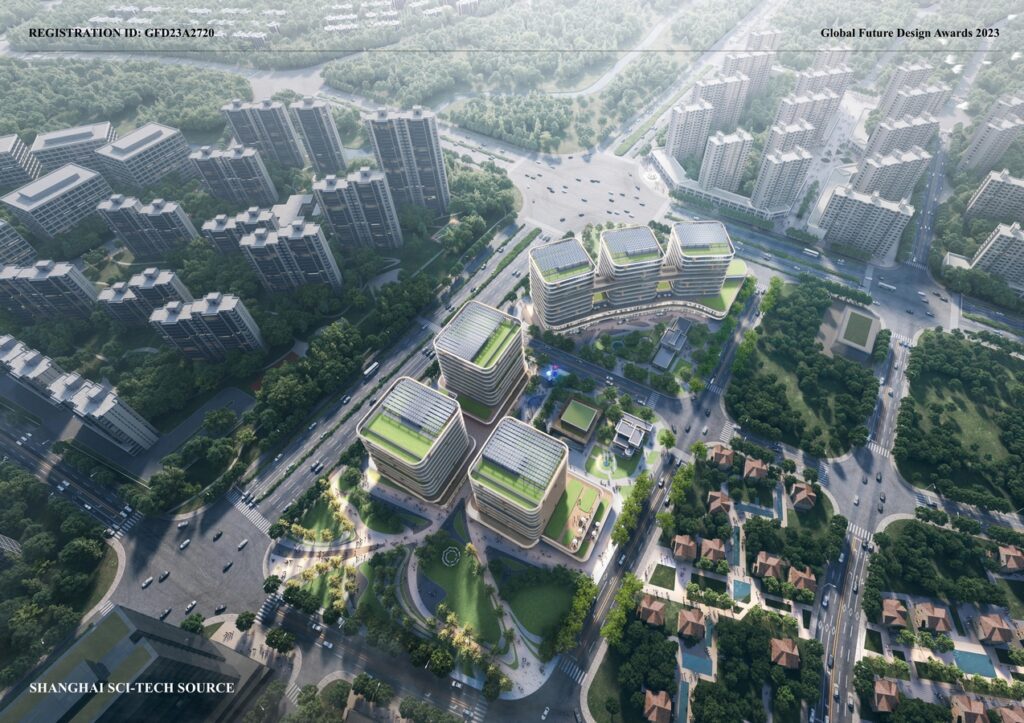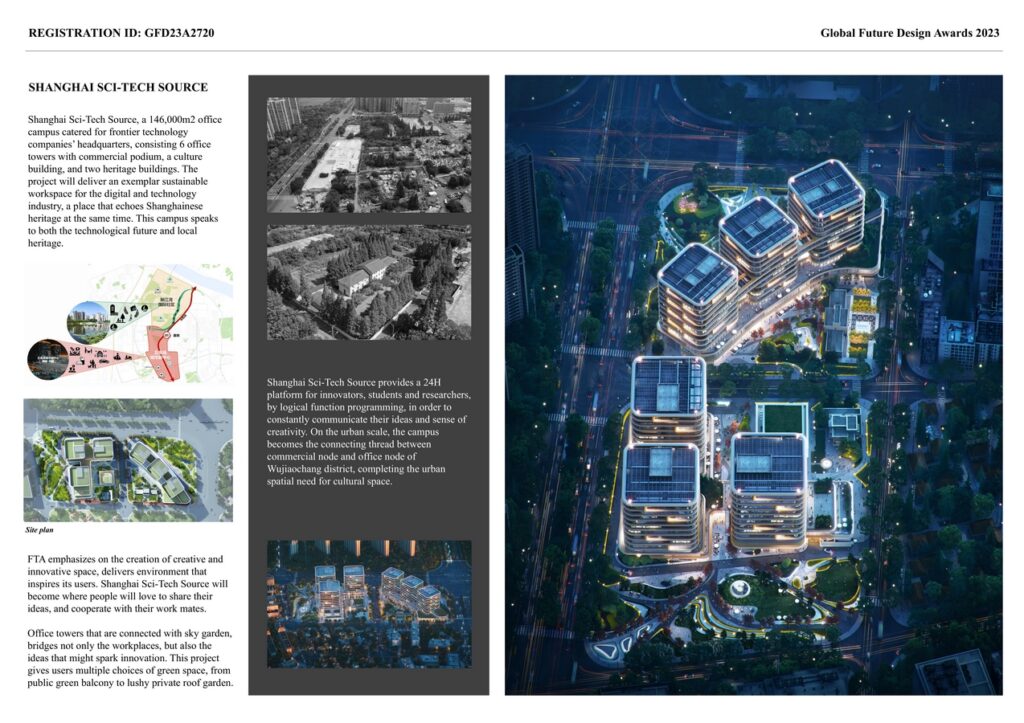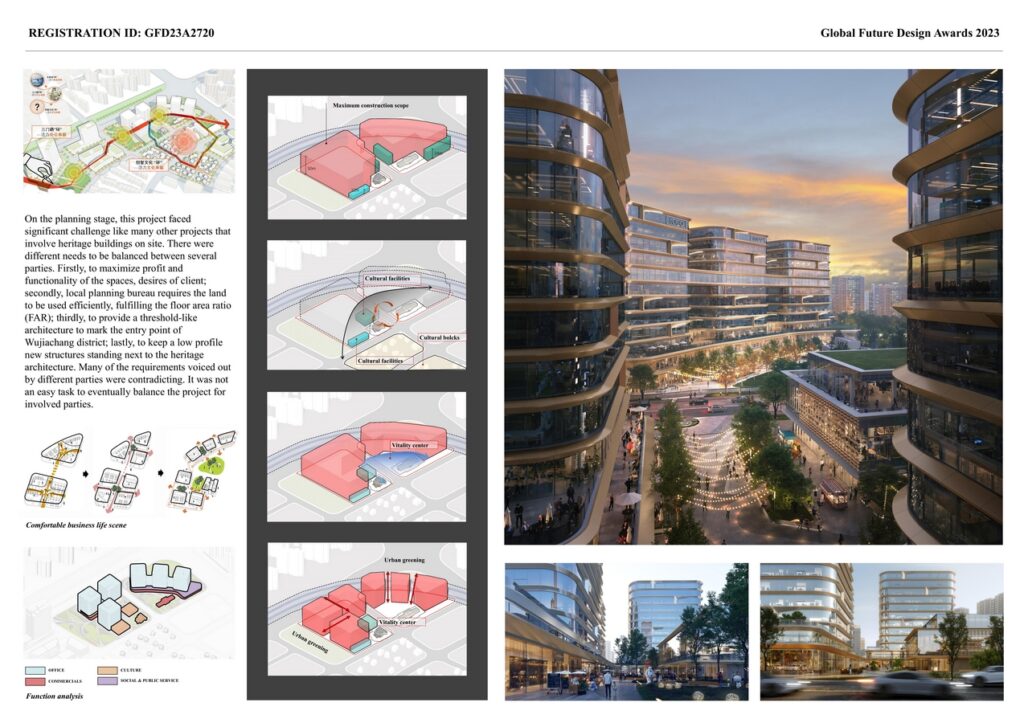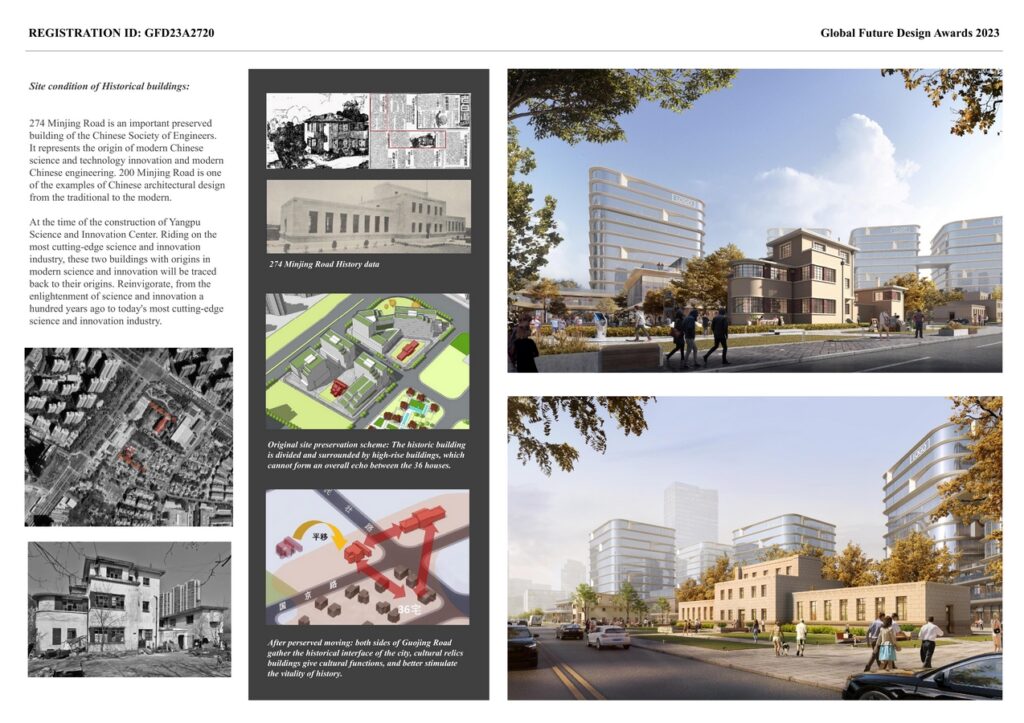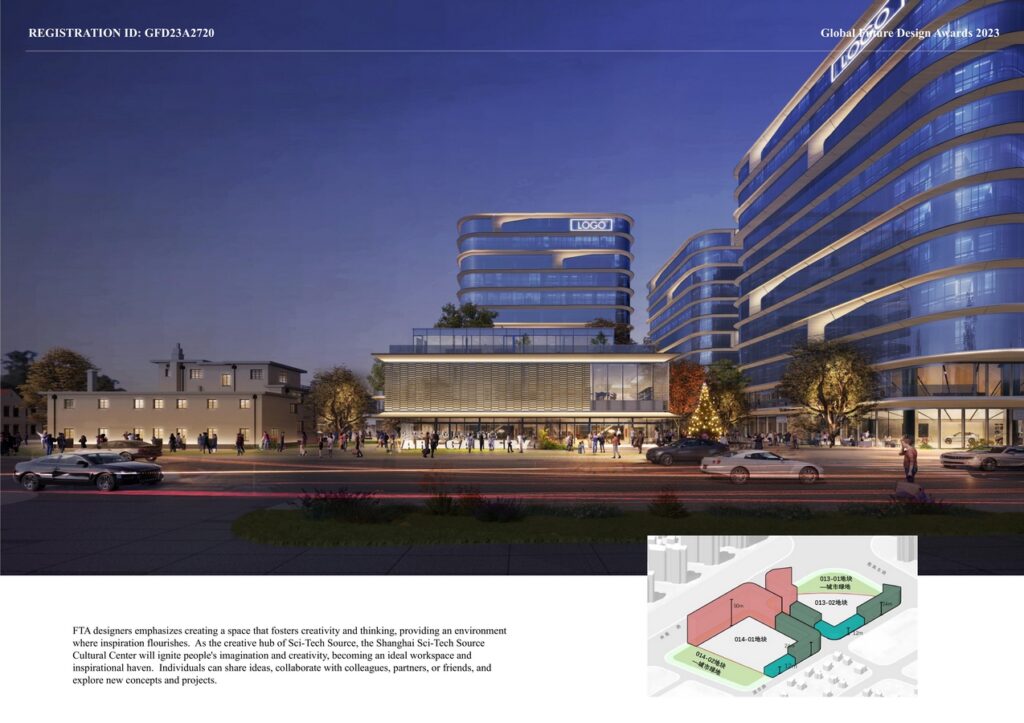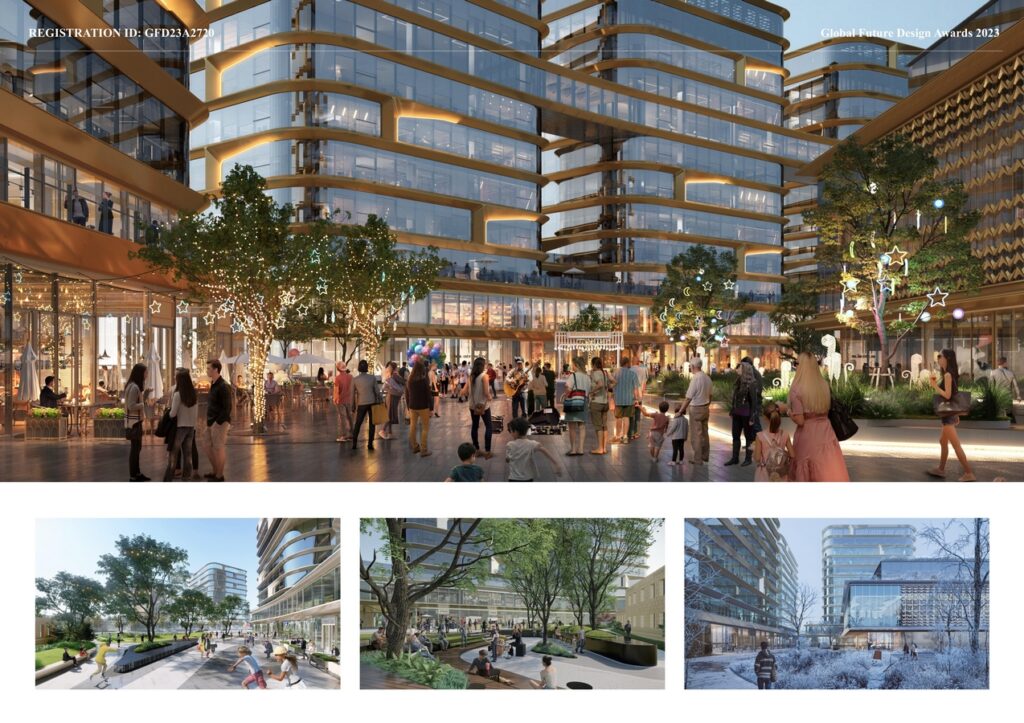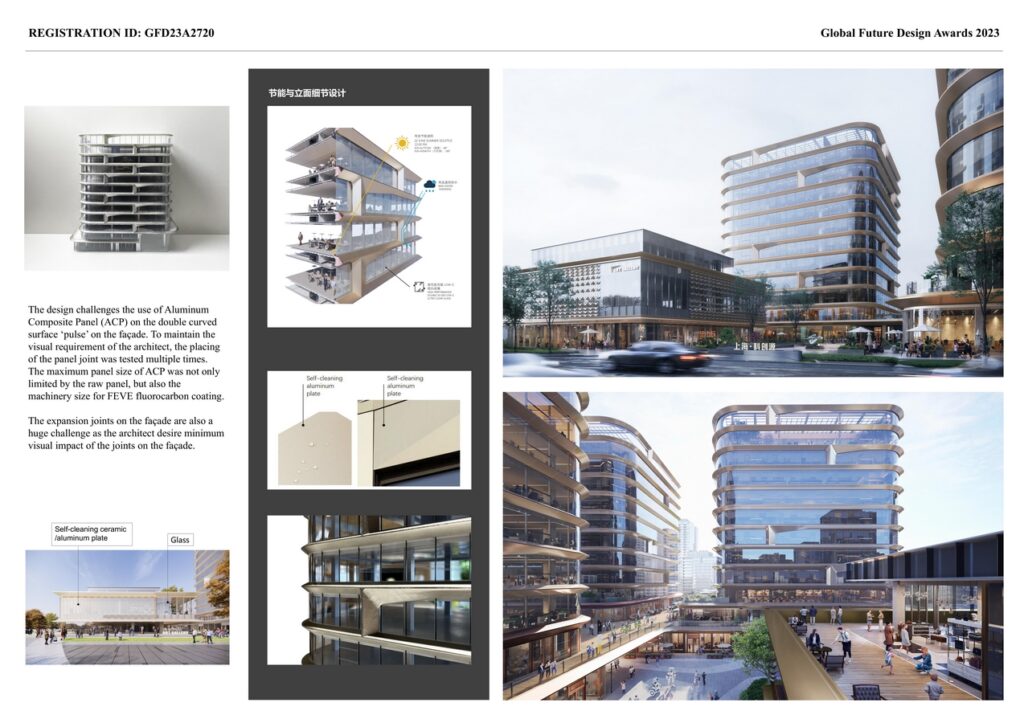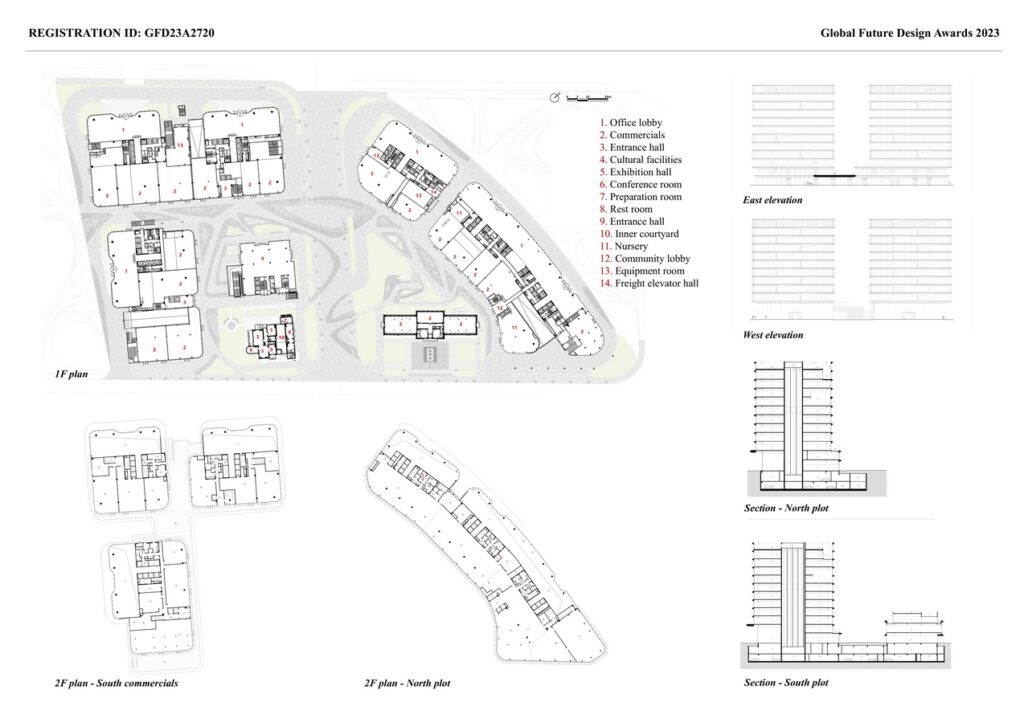Shanghai Sci-Tech Source, a 146,000m2 office campus catered for frontier technology companies’ headquarters, consisting 6 office towers with commercial podium, a culture building, and two heritage buildings. The project will deliver an exemplar sustainable workspace for the digital and technology industry, a place that echoes Shanghainese heritage at the same time. This campus speaks to both the technological future and local heritage.
Global Future Design Awards 2024: Entries Open!
Take your work to the next level. Register Now…
Gold 🏆 Winner
Global Future Design Awards 2023
Shanghai Sci-Tech Source
Mixed-Use Architecture (Under Construction)
Firm
FTA
Architect/Designer
Sun Qi
Design Team
Zhang Ping, He Yong, Yu Ying, Liu Yang, Wang Shangzi, LEE MIN CHENG, He Chendi, Wang Yang
Project Location
Shanghai City
Country
China
Photographer/Copyright
©FTA
Social Media Handles
Facebook: N/A
YouTube: N/A
Instagram: N/A
Twitter: N/A
Website URL
www.ftaarch.com.cn
Shanghai Sci-Tech Source provides a 24H platform for innovators, students and researchers, by logical function programming, in order to constantly communicate their ideas and sense of creativity. On the urban scale, the campus becomes the connecting thread between commercial node and office node of Wujiaochang district, completing the urban spatial need for cultural space.
FTA emphasizes on the creation of creative and innovative space, delivers environment that inspires its users. Shanghai Sci-Tech Source will become where people will love to share their ideas, and cooperate with their work mates. Office towers that are connected with sky garden, bridges not only the workplaces, but also the ideas that might spark innovation. This project gives users multiple choices of green space, from public green balcony to lushy private roof garden.
FTA designers emphasizes creating a space that fosters creativity and thinking, providing an environment where inspiration flourishes. As the creative hub of Sci-Tech Source, the Shanghai Sci-Tech Source Cultural Center will ignite people’s imagination and creativity, becoming an ideal workspace and inspirational haven. Individuals can share ideas, collaborate with colleagues, partners, or friends, and explore new concepts and projects.
Interconnected buildings form a three-dimensional sky courtyard. This not only offers picturesque landscapes but also creates a secret garden that promotes creativity and communication. The garden’s design combines natural elements with modern architecture, forming a breathtaking aerial oasis through unique vertical landscapes.
On the planning stage, this project faced significant challenge like many other projects that involve heritage buildings on site. There were different needs to be balanced between several parties. Firstly, to maximize profit and functionality of the spaces, desires of client; secondly, local planning bureau requires the land to be used efficiently, fulfilling the floor area ratio (FAR); thirdly, to provide a threshold-like architecture to mark the entry point of Wujiachang district; lastly, to keep a low profile new structures standing next to the heritage architecture. Many of the requirements voiced out by different parties were contradicting. It was not an easy task to eventually balance the project for involved parties.
The design challenges the use of Aluminum Composite Panel (ACP) on the double curved surface ‘pulse’ on the façade. To maintain the visual requirement of the architect, the placing of the panel joint was tested multiple times. The maximum panel size of ACP was not only limited by the raw panel, but also the machinery size for FEVE fluorocarbon coating. The expansion joints on the façade are also a huge challenge as the architect desire minimum visual impact of the joints on the façade.
In the future, Shanghai Sci-Tech Source will be constructed with the highest level of WELL Building Certification. The WELL system is often referred to as the “Oscars of the building industry.” It measures, certifies, and monitors various aspects of the building environment, including air, water, nutrition, light, health, and comfort, to maximize the health and well-being of occupants.


